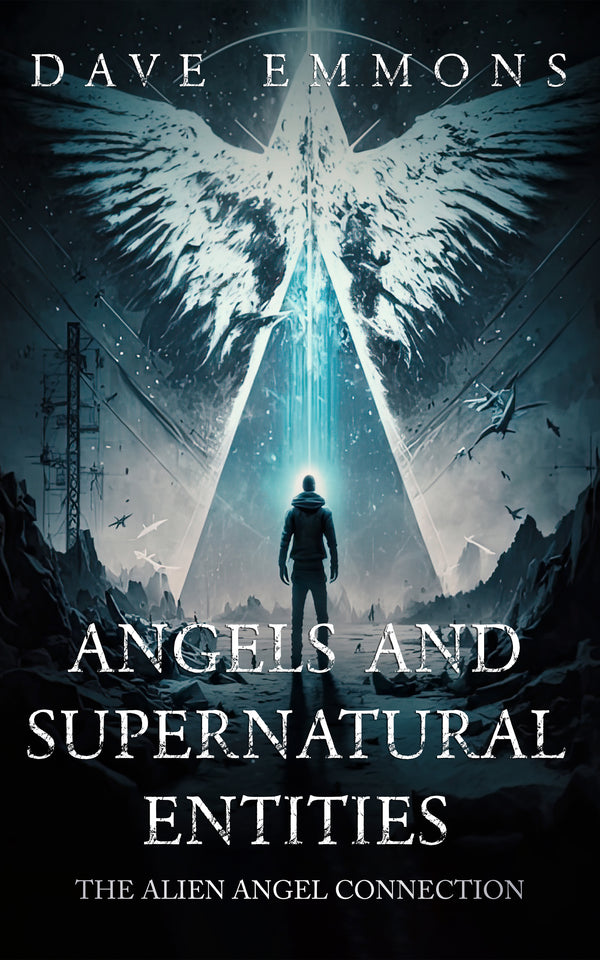The Loch Ness Monster Legend and the Quest for the Unknown

By Wade Beaumont, Cryptozoologist and Park Ranger
Introduction
Howdy folks, Wade Beaumont here. Born and raised in the wide open spaces of West Texas, I was weaned on stories of the wild and unexplained. Tales of mysterious creatures lurking just out of sight captured my imagination from an early age, so it’s no surprise I grew up to be a cryptid enthusiast and amateur Bigfoot researcher. But today I want to turn our attention across the pond to another legendary beast that’s inspired generations—the Loch Ness Monster.
Nestled among the misty Scottish Highlands, Loch Ness is the largest body of freshwater in the UK. Over 23 miles long and unfathomably deep, its peat-darkened waters have hidden secrets for centuries. But it wasn’t until the 1930s that the world caught wind of Nessie, as the elusive creature came to be affectionately called. That iconic image of a long serpentine neck emerging from the depths is etched in our collective consciousness, but there’s more to this mystery than just a grainy photograph.
In this here article, we’ll dive deep into the origins of Nessie’s legend and the key sightings that sparked a phenomenon. We’ll navigate the twists and turns of various hoaxes, scientific expeditions, and theories that try explaining what might lurk beneath the loch’s surface. And we’ll ponder the cultural impact and enduring allure of the Loch Ness Monster in our modern digital age. My aim is to provide the most comprehensive overview of this captivating mystery to date. So settle in, friends, as we embark on an expedition through the highs, lows, and half-truths behind the world’s most famous cryptid that isn’t Bigfoot!
The Birth of a Legend
While the Loch Ness Monster didn’t gain worldwide fame until the 1930s, whispers of a mysterious beast in those waters date back over a thousand years. The earliest known written account comes from the Life of Saint Columba in the 6th century AD. It describes how the Irish monk saved a swimmer from being devoured by a “water beast” in the River Ness, which flows into Loch Ness. Now, skeptics argue this beast was likely symbolic, a common motif in medieval folklore. But where there’s smoke, there could be fire.
Legends of creatures lurking in Scottish lochs persisted through the centuries. In the 1870s, folks reported seeing a huge animal rolling and thrashing in Loch Ness. Fast forward to April 1933, when a new road opened along the loch's northern shore, offering unobstructed views of its vast expanse. That year changed everything.
It all started with a couple, George and Joanna Spicer, driving along the road one night. They claimed to see the most extraordinary animal cross in front of their car. They described its long, undulating neck and massive body, estimating it to be some 20 feet long. The London newspapers ran wild with the story, dubbing the beast “The Monster.” Little did George know his sighting would kick off a phenomenon.
More reports of a large creature swimming and splashing in Loch Ness flooded in. Hotels were booked to capacity with journalists and monster hunters arriving daily. The game was afoot, and the legend of the Loch Ness Monster took hold.
The Surgeon's Photograph: A Picture Worth a Thousand Questions
While George Spicer’s sighting put Nessie on the map in 1933, it was another event the following year that cemented her place in history. In April 1934, a photograph emerged that seemed to show a creature with a small head and long neck rising from the loch. Dubbed the “Surgeon’s Photograph” because it was reportedly taken by a London doctor named Robert Kenneth Wilson, this image was considered definitive proof of the monster for over 60 years. But as is often the case with Nessie evidence, not everything was as it seemed.
The photo’s authenticity was first called into question in 1975, when an article in The Sunday Telegraph revealed it was part of an elaborate hoax. The mastermind was big game hunter Marmaduke Wetherell, who sought revenge against the Daily Mail newspaper for ridiculing him over some fake Nessie footprints he had “found” the year before. Quite the grudge!
Wetherell conspired with his stepson, a sculptor named Christian Spurling, to create a toy submarine fashioned into a sea serpent head and hump. They photographed the model in the loch, and the rest is history.
The hoax wasn’t formally exposed until the 1990s, but the seeds of doubt were planted. This iconic photo had fueled public interest and inspired serious scientific study of the creature. Its debunking was a major blow to the legitimacy of Nessie research. However, one fraudulent image doesn’t negate the numerous credible eyewitness accounts, many by upstanding citizens and seasoned professionals. But it did make the world more skeptical, and forced researchers to up their game.
Scientific Quests for Nessie
Speaking of research, the Loch Ness Monster has been subject to some serious scientific scrutiny over the decades. One of the most ambitious undertakings was Operation Deepscan in 1987. This massive analysis involved a flotilla of 24 boats equipped with sonar, sweeping the width of the loch to study its depths. Many sizable, moving objects were detected, proving Nessie wasn’t just an optical illusion. But the sonar images were inconclusive, falling short of providing conclusive evidence of some monstrous inhabitant.
Cutting-edge DNA analysis has also been brought to bear, most notably in a major study conducted in 2018 by scientists from New Zealand. They took water samples from all over Loch Ness and sequenced environmental DNA to catalog every living species present. The results were fascinating, confirming the presence of eels, trout, and other known creatures. But there were no DNA traces of large exotic animals like Greenland sharks or sturgeons. So unless Nessie has somehow evolved a way to avoid shedding any cells, she remains elusive as ever.
Efforts to validate or debunk the monster continue with the latest technology, from satellite tracking to drone footage. While nothing definitive has emerged, absence of evidence doesn't necessarily mean evidence of absence. Of course, skeptics argue that if a huge creature lived in the loch we’d have found solid proof by now. But when you’re hunting a legend, the search itself is meaningful. Each expedition advances our knowledge, bringing us one step closer to the truth. As they say here in Texas, it ain’t the kill but the thrill of the chase!
Theories and Speculations
Now we can’t discuss the hunt for Nessie without examining some of the leading theories on what she might be. Some of the more down-to-earth possibilities include a giant eel or Wels catfish, which could grow large enough in Loch Ness’s ample food supply. A wayward Greenland shark is another contender. But let’s be honest, we’re drawn to this mystery because our minds go to more fantastical places.
The notion of Nessie being a surviving plesiosaur has captured imaginations for generations. These long-necked marine reptiles are thought to have gone extinct along with the dinosaurs. But some speculate a small population could have endured in the isolated Loch Ness. There are issues with this theory, though. First, the loch was frozen solid under glaciers until about 10,000 years ago. And scientists argue it’s unlikely a large air-breathing animal could inhabit its cold, murky depths undetected. Personally, I find the plesiosaur explanation hard to fully swallow. But it can’t be ruled out.
Some advocate for Nessie being a new, unclassified creature, what we in cryptozoology call a relict hominoid. They suggest she could represent a line of long-necked aquatic mammals parallel to the plesiosaurs, evolving unique adaptations for Loch Ness over eons. Admittedly, the evidence for this is scant. But then again, the natural world still holds plenty of surprises.
Beyond specific creatures, folklore may offer clues. The kelpie legends of shape-shifting water horses could have seeded beliefs in lake monsters. And misidentifying known animals like swimming deer or otters likely bolstered the myth. But cultural context alone doesn’t satisfactorily explain the phenomenon for me. There are simply too many credible sightings that defy mundane explanations.
The Hoax Factor
Unfortunately, where there’s fame there are folks out for glory. Hoaxes have plagued the hunt for Nessie since the early days. Take the “Surgeon’s Photograph” covered earlier. It was far from the only ruse.
In 1972, big game hunter Marmaduke Wetherell was at it again, this time planting a bogus carcass that was just a decaying elephant seal. Then there was the notorious “Loch Ness Muppet” photo from 1977, showing a creature with a giraffe-like neck in the water. The photographer, Anthony Shiels, later admitted he fabricated it using a submerged model.
Fast forward to the 21st century, when a local man named George Edwards released a photo claimed to show Nessie in 2011. The image looked strikingly like a fiberglass hump used in a TV documentary Edwards had participated in. He eventually confessed it was a hoax, but insisted he really did see the monster back in 1986. Such deception only hurts serious cryptid research.
With today’s digital editing technology, creating fake evidence is easier than ever. We must be cautious analyzing photos and videos, which are too easily manipulated. As much as I want to believe every new Nessie sighting is the real deal, an open yet critical mind is crucial. Having the truth on our side is more important than a good story.
Nessie in the Digital Age
Speaking of stories, the Internet has allowed Nessie’s legend to spread farther and wider than ever before. Say a visitor to Loch Ness snaps some compelling footage on their phone. Within hours it can be seen by monster enthusiasts across the globe, sparking renewed interest. But this digital connectivity is a double-edged sword when it comes to evaluating evidence.
On one hand, crowdsourcing analysis allows more critical eyes to weigh in, identifying hoaxes. But information overload makes it harder to separate fact from fiction. Photos are shared without context, dubious sources cited as definitive proof. Our digital echo chambers reinforce what we want to believe. As we ponder new Nessie sightings in this age of misinformation, a healthy dose of skepticism is key.
Personally, I think technology should aid, not impede, legitimate research. There are still depths of Loch Ness yet unexplored, discoveries awaiting those with patience and dedication. Perhaps one day, better underwater cameras will finally reveal the source behind this enduring mystery. But even then, do we really want all the answers?
The Cultural Impact of Nessie
Approaching nearly a century since that fateful 1933 sighting, the ripples of Nessie’s legend extend far beyond the loch itself. The Loch Ness Monster is woven into the very cultural fabric of Scotland, a symbol as iconic as tartan and bagpipes. She draws tourists from around the world, eager to cruise the dark waters or tour exhibits at the lochside Loch Ness Centre. Local shops overflow with Nessie plushies and trinkets—she’s a merchandising giant!
Nessie’s influence permeates worldwide media too. She’s starred in horror movies, children’s cartoons, and comic books. There are Nessie-themed cafes in Asia and Loch Ness replicas in amusement parks across Europe. This humble Scottish lake monster is a global pop culture icon. But why does she still captivate hearts and minds in our high-tech modern era?
I believe it comes down to the spirit of exploration, the quest for unknown realms that compels us. New species are still being discovered, mysteries not yet explained. Nessie represents the sense of wonder, the hope that there are fresh secrets left to uncover. Her story kindles our imagination, makes us feel that this big beautiful world of ours has a few surprises yet in store. And that’s a gift more magical than any monster.
Wrapping Up
As we wrap up this deep dive into the Loch Ness legend, I find myself filled with more questions than answers. The skeptic in me recognizes that much of the so-called evidence is inconclusive at best, fraudulent at worst. But there’s something about this mystery that defies being completely dismissed. Too many credible witnesses over decades report seeing something large and extraordinary in that loch. My cryptid hunter’s gut tells me there could be substance behind the stories.
While the hard proof may remain elusive, the legend endures. Maybe the real value lies not in definitively solving the mystery, but in the spirit of exploration it fosters in all of us. In a world increasingly tamed and quantified, the possibility of something unknown lingering just below the surface—whether in Scottish lochs or our own backyards—is a breath of fresh air.
So fellow travelers, I encourage you to keep your sense of wonder alive. Question assumptions, stay open to possibilities, and never lose your appetite for adventure. The truth is still out there for those bold enough to seek it. Happy hunting!
Yours cryptidly,
Wade Beaumont
From Bigfoot to UFOs: Hangar 1 Publishing Has You Covered!
Explore Untold Stories: Venture into the world of UFOs, cryptids, Bigfoot, and beyond. Every story is a journey into the extraordinary.
Immersive Book Technology: Experience real videos, sights, and sounds within our books. Its not just reading; its an adventure.



























